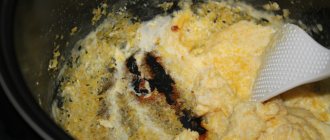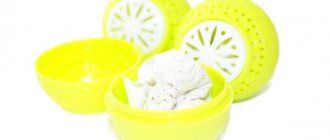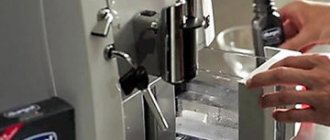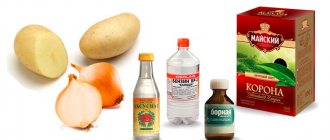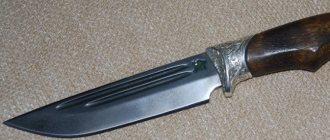Reasons why food burns on dishes
As a rule, a frying pan burns for a reason. Certain conditions must be created. This often happens due to:
- purchasing a low-quality frying pan. Companies that respect their reputation produce dishes that last at least 2-3 years. A second-rate fake deteriorates in the first year of use;
- mechanical damage. This is due to the use of metal knives, spatulas, forks for stirring and sponges for cleaning, and storing pans one inside the other;
- expiration date. Consider quality and material when calculating service life;
- sudden temperature changes. Do not move the pan from a hot stove to the refrigerator and vice versa;
- the use of abrasive cleaning agents that disrupt the structure of the surface on which they are applied;
- increased porosity of metal (aluminum, cast iron and enamel).
Activated carbon
Suitable for materials: ceramics, enamel, stainless steel, aluminum, cast iron.
Type of soot: porridge, milk.
Instructions:
- Grind 3-4 tablets of activated carbon into powder.
- Fill the bottom of a pot or pan with powder.
- Let stand for 30 minutes.
- Carefully pour cool water so as to cover the remaining food, let it brew for another 0.5 hour.
- Wash with traditional detergents.
It is not advisable to use strong alkaline products to clean aluminum products, because... It is easy to damage the smooth surface.
Cleaning stainless steel from carbon deposits - video
What to do?
There is no universal means for removing burnt marks from the surface of a frying pan. It is important, first of all, to consider what material it is made of. Only then, having studied all its features, you can start cleaning.
Cast iron
It is durable. The following tips can help in the fight against burning:
- Initially, when purchasing, rinse it thoroughly, dry it, pour salt 1 cm high, place it on a heated stove, stirring the salt for an hour.
- If it has already been in use, remove the burnt marks, wash, dry and bake it on the stove. Next, you need to coat it with oil both on the outside and on the inside and place it in the oven, after turning it upside down and placing foil under it (provided that the handle is not made of wood). Set the temperature regulator to 180 degrees, let it stand in the oven for an hour, turn it off and, without removing it, wait until the utensil has cooled down. Take it out and try not to use it for a while (3 days - a week).
Aluminum
Similar care is required after purchase. If the dishes start to burn over time, you can revive them as follows:
- wash, heat over medium heat;
- cut the bread into cubes and distribute it over the entire inner surface;
- reduce the heat and fry it for 5 minutes.
Non-stick coating
It seems that it should be the most protected, but food also burns to it. The reason for this is the thinning of the protective layer. Unfortunately, it cannot be restored. The frying pan is sent to a well-deserved rest, especially if it has served for a very long time. If it becomes unusable quickly, the reason for this may be an initially very thin layer of non-stick protection or improper operation.
Effective ways to clean soot from frying pans
Try boiling water with grated laundry soap in it for 15 minutes. You should drain this liquid, wipe the bottom with a sponge, dry it, rub it with oil and try to fry the food. If it doesn’t help, then you’ll have to say goodbye 100% to the utensils.
Enameled
It is prone to burning, as it has a porous structure and is one of the most problematic in terms of the fact that it cannot be heated. The only way to save utensils is by using cleaning products and lubricating its surface with a piece of lard or fat.
Ceramic
This is the most harmless option for the human body, but despite this advantage, it does not last long. Under ideal conditions it lasts from 2 to 4 years.
If it burns, you should:
- Wash thoroughly without using metal sponges or deforming cleaning agents;
- For stubborn stains, pour soapy water over the stains or sprinkle moistened baking soda on the stains and let stand for about 20 minutes. After time has passed, clean with a melamine sponge.
For preventive purposes, every month, wipe the utensils with oil 1-2 times using a napkin and let them stand like that for a day.
Stainless steel
The material is distinguished by its reliability and durability, so any problems that arise are associated with violation of the rules of use. Stainless steel cookware lasts for decades, given that the ratio of chromium to nickel in steel is 18 to 10.
Help:
- clean and rinse (any items and types of cleaning products are acceptable) until shiny;
- remember the rules for further operation (heating should be strong until drops of water “dance” and the oil poured before frying should have time to heat up).
These recommendations will help prevent further episodes of burning.
Grill
Has a grooved bottom. It is made from the same materials as conventional ones, therefore, in order to choose the most suitable anti-stick option described above, you need to find out what metal it consists of.
Enameled Dutch oven
The enamel coating is quite strong, but requires delicate handling. Enameled frying pans look very beautiful, but it is strictly forbidden to heat them. This method will completely damage the coating. If food begins to stick to the bottom, you can do the following:
- Clean the pan thoroughly using a soft sponge and detergent.
- Dry the utensils with a paper towel.
- Generously coat the entire inner surface with fat or lard.
To prevent food from sticking to the enamel frying pan, you should carry out the above procedure before each cooking. At the same time, using oil will avoid burning.
If only the middle burns
The phenomenon in which burns form only in the middle is associated with heating devices. This problem most often occurs among those who use gas burners. The heat is distributed unevenly along the bottom, and the greatest heat occurs in the center of the pan. The heat from the flame does not dissipate and is directed directly. With large cookware, the food in the middle cooks much faster during the cooking process, which contributes to the formation of soot. You can solve the problem by purchasing a frying pan with a smaller diameter. It is also effective to use a special device that cuts through the fire and distributes heat over the entire bottom area.
Cast iron frying pan: how to heat it and why it is needed
Sprays
Special products are sold not only in the form of liquids in bottles and cans, but also in the form of sprays.
Spray for removing soot and grease
The grease cleaner is sold in a special container with a convenient spray nozzle, which allows you to economically and evenly apply the liquid to the surface of the container. This can make it much more economical to mop up grease from the pan with a spray.
How to avoid burning?
Before use, prepare the frying pan: wash it thoroughly and wipe it with oil or fat. Those utensils made of cast iron require calcination of 1 cm of poured salt for an hour.
Adviсe:
- Lubricate with plenty of oil, lard or fat before each use.
- After distributing it evenly, pour a little salt on the bottom and heat the frying pan.
- For those made of porous metals (cast iron, aluminum), pour apple cider vinegar and wait until it evaporates over low heat.
- After the described procedures, start cooking.
- Stirring food should not be done with spoons, iron spatulas, knives or anything that has a hard surface. This can leave scratches that compromise the protective layer and damage the pan. The most optimal are items made of wood or plastic.
- When washing, avoid hard sponges and brushes. Cleaning agents are not recommended. The best option is good old baking soda diluted with water.
- The dishes should be wiped dry. This will prevent mold and rust from forming, which can reduce the non-stick properties.
- Pans should be stored separately from each other, without stacking them. This ensures the safety of their surface.
Cleaning cast iron products from rust
Cast iron is durable and resistant to many impacts, but not to rust. It is formed due to the fact that the surface of the alloy is porous. Moisture and grease accumulate in micro-recesses, which leads to oxidation and rust. It spoils the appearance of the dishes, the taste of the food, and even makes the food dangerous.
The following remedies will help you clean cast iron cookware from rust at home:
- Soda. This method also involves digestion. You need to take a large container, pour in a sufficient amount of water, add 200 g of soda, immerse the frying pan, and cook for 2-3 hours. After the product has cooled, it should be rinsed with warm water.
- Vinegar. Mix equal amounts of water and vinegar, place the dishes in the resulting solution so that it completely covers the rust, and leave for 1.5-2 hours. Rub off any remaining dirt with a stiff brush.
- Coca Cola. This drink contains orthophosphoric acid (E338), which perfectly fights rust. The method is simple - pour a sufficient amount of soda, heat it up, leave for 1 hour, rinse.
- Anti-rust powder. Sprinkle the product onto the surface and use a brush to scrub off any red spots well. Then pour a little water, soak the dishes for 30-40 minutes, and then mechanically remove any remaining rust.
Attention! To prevent rust from appearing on the frying pan, it is necessary to properly care for it: wash it immediately after cooling, transfer food, and do not leave it in the dish. It is important to completely remove any remaining moisture after washing with a towel.
Caring for frying pans
Tips for caring for a frying pan depending on the material from which it is made.
Teflon coated
It does not require special care. Thanks to Teflon, it independently prevents the formation of soot both inside and outside. If it does appear, then you need to fill the frying pan with hot water for half an hour. For greater effect, you can add a drop of detergent or add 3 tbsp. spoons of baking soda. The carbon deposits will dissolve without the use of prohibited abrasives. Wipe it with a soft sponge.
It is important to remember that the Teflon coating is easily damaged.
Stainless steel
Steel is the most finicky metal from which cookware is made. A minor defect is immediately visible, and food easily burns to the surface.
Frying pan with ceramic coating: pros and cons, how to choose
You can clean carbon deposits from stainless steel using table salt, soda or vinegar with citric acid.
Cast iron
They are practically eternal, unpretentious and harmless. Cast iron frying pans can be called eternal. They are absolutely easy to care for and do not release harmful substances into food. In addition, they do not lose their appearance even over the years. All you have to do is clean off the carbon deposits in a timely manner. There are several recipes for the best ways to get rid of it.
For cast iron frying pans, care recipes intended for steel ones are suitable. You can also use both baking soda and citric acid vinegar. In addition, cast iron is not afraid of contact with abrasives, so you can safely clean them with brushes and metal sponges.
Ceramic
They are becoming more and more popular. Its surface is smooth and uniform. They are one of the easiest to care for. Any scratch can make the frying pan unusable, so you need to purchase special products for ceramics to dissolve carbon deposits.
Why did the pan start to burn?
Food can stick to any surface, regardless of whether it has an additional protective coating or not. For non-stick kitchen utensils, the cause of food sticking may be a poor-quality product (manufacturing defect) or surface wear. Teflon, titanium, marble, and other types of cookware have an expiration date. Before you understand what you need to do to prevent the pan from sticking, you should understand what factors contribute to food sticking.
The main reason why food starts to burn is the porous surface of the kitchen product. Aluminum, cast iron and enamel cookware have this structure.
Removing food debris
If a new frying pan, which has been in use only a few times, suddenly begins to burn, the cause may be improper care of its surface. Many housewives use harsh chemicals or harsh abrasives to remove food debris. They negatively affect the technical condition of kitchen utensils. But, if you don’t completely clean the walls and bottom of food particles and start preparing the next dish, the food can also burn.
Service life of pans
| Material from which the frying pan is made | Life time |
| Cast iron | Decades |
| Stainless steel | Up to 6-10 years |
| Ceramics | From 3 to 5 years |
| Aluminum | From 3 to 8-10 years |
| Non-stick coating | From 3 to 10 years (depending on texture) |
| Enameled | Becomes unusable after any damage |
Oil is your friend and helper
What happens to food - that same cutlet or piece of chicken - after it is added to a frying pan with hot oil? High temperature instantly evaporates moisture from its surface, turning it into steam. But since the piece of chicken is lying in the frying pan, the steam cannot simply escape, and it lifts the product a little - it turns out to be something like an air cushion that forms a layer between the food and the metal, and prevents their interaction.
Thus, the oil must always be heated properly, almost to the smoking point, but still without allowing it to smoke - and the amount of oil must be sufficient to maintain its temperature at the required level.
Worried about using too much oil? You are right to be afraid - but there are tricks here too, knowing which you can reduce the amount of oil.
First, use a frying pan with a thick bottom - this holds heat well and will heat the oil that the treacherous food is trying to cool.
Secondly, whenever possible, fry foods in batches - even if it takes a little longer, but this way they will not crowd in the pan and fry correctly.
Finally, before frying, blot your food with paper towels to remove moisture from the surface: less water means less energy needed to evaporate it, which means less oil.
Which pans are the least likely to cause food to burn?
Without a doubt, the leader in this rating is a frying pan with a special protective non-stick coating. But don’t be mistaken about the fact that you can cook with it without oil. It is necessary, only much less is required. A drop is enough. An additional advantage: you do not need to closely monitor the heating process.
At the end of the list are frying pans that have a porous surface. For example, cast iron. It requires a large amount of oil for coating and frying, so that it forms a layer that protects against the formation of burning.
The most difficult case is steel cookware. Metal is finicky: it heats up unevenly and quickly, requiring more oil and thorough heating.
Household chemicals
Now there are a variety of professional household chemicals that make it very easy to clean frying pans, because they break down old fat more effectively and quickly than traditional methods. You can clean carbon deposits using the following means:
- Cilit Bang Anti-grease. This substance degreases and is suitable for both fresh and very old carbon deposits. Another plus is that Cilit Bang can be found in any hypermarket.
- Gold Unicum removes carbon deposits from dishes without damaging the surface.
- Schumann. This product can be found in almost all stores and supermarkets. It is not cheap, has a pungent odor, and is difficult to wash off, but it also works well with very old fat.
- Mister Muscle. Another affordable, fairly inexpensive substance that copes with many types of contaminants, including carbon deposits.
- Helper Professional. This product is suitable for any coating, even non-stick. It promotes gentle cleaning without scratching the surface with abrasives.
This cleaner is quite difficult to find, but it does its job perfectly: it has virtually no odor, removes even the most stubborn carbon deposits, and is easily removed from the surface.
The pipe cleaner can also be used against old carbon deposits and grease. It acts more aggressively, so you should not test its effect on Teflon and ceramics.
Attention! Be sure to use protection: gloves to avoid damaging the sensitive skin of your hands and, in special cases, a medical mask that will protect the mucous membranes and help prevent you from inhaling caustic fumes.

